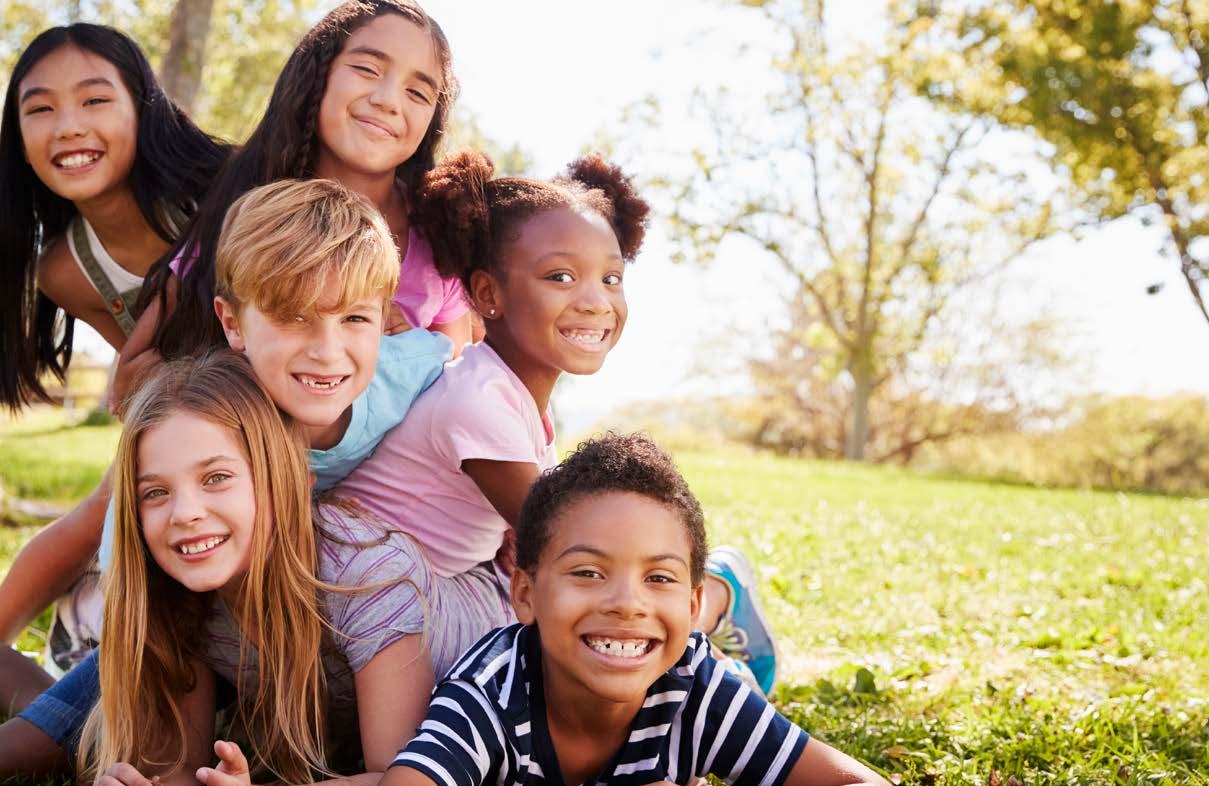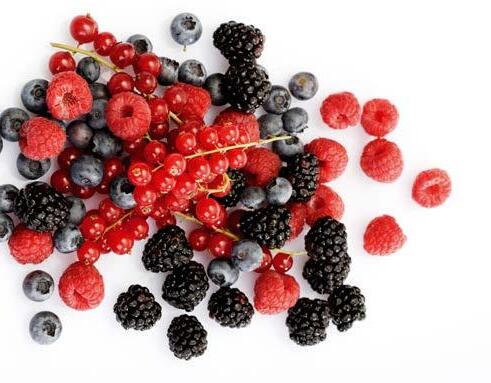BE AN INCLUDER!
YOUR PLACE FOR FUN, GAMES & MORE. ISSUE #16 • Feb 2022 DIVERSITY & INCLUSION
oomer
B
an G B oomer an G
IN THIS ISSUE
WHAT'S UP WITH DIVERSITY AND INCLUSION?
Being different is a good thing! Learn how you can make others feel welcome.
BE AN “INCLUDER”
How to make others feel comfortable and welcome … from local kids.
BREAKFAST OF CHAMPIONS
What starts the day in India, Russia and Kenya?
CUSTOMS AROUND THE WORLD
What’s cool in Korea may not be “bon” in France.
PLUS: BOOKSHELF WORDSEARCH 04 06 08 10 13 14 02 Boomerang Boomerang 03
WHAT'S UP WITH DIVERSITY AND INCLUSION?
Wouldn’t it be boring if everyone in the world were exactly the same? If we all looked and dressed alike, ate the same foods and spoke the same language, the world would be a pretty boring place. It’s our diversity, or differences, that make the world so exciting.
WHAT’S DIVERSITY?
Diversity is all about what makes us individuals. Across the world and even within your own community, you’ll find lots of different people. Some of the obvious differences are age, appearance, culture, language, disability and race or ethnicity. There are even differences we can’t physically see, such as sexuality or religious beliefs. The important thing is to always accept and love others, even if they do, see and believe things differently than you. This is called inclusion.
WHAT’S INCLUSION?

Inclusion is the involvement and empowerment of those who are different than us. By including others, we practice respect for all talents, beliefs, backgrounds and ways of living. There are some people in our world who only like those who look and believe the same as they do. This is called prejudice, which is basically thinking badly of someone because of their differences before you know them.
WHY DOES IT MATTER?
Talking openly and positively about differences helps us better understand ourselves and those around us. By embracing diversity and inclusion, we learn to empathize with people who are different than us, which changes our perspective to see what it’s like to live in their skin. Diversity and inclusion make us all kinder, more respectful people.
HOW CAN I LEARN MORE?
There are many excellent ways to explore diversity and inclusion. Then you can apply these needed attitudes to your life. Here are five:
1. Books are a great way to introduce yourself to cultures and people you might not come across in your everyday life. Chat with your teacher or school librarian; they are likely to have a list of recommendations for you. Check out our “BookShelf” reading list in this issue of Boomerang, too!
2. Bring diversity into your diet! Each month, choose a different culture or cuisine from around the world and try out a new recipe. You might just find your new favorite meal!
3. Learn more about diversity by exploring your family’s background. Ask a parent, grandparent or another family member to make a family tree with you. This will give you an understanding of where your family comes from while helping you form an appreciation for different cultures.
4. Go to a museum! Small or large, local or global, museums are packed with information about various cultures around the world. Take your time going through the exhibits and don’t be afraid to ask questions.
5. Engage in the world around you. That’s the best way to understand these principles. Take advantage of time in the car or at the dinner table with your family to discuss what’s happening in the news or listen to a kid-friendly news podcast like KidNuz for more insight.
04 Boomerang Boomerang 05
You may have heard the quote, “We are less when we don’t include everyone.” What does that mean? It means including everyone only makes things more fun! You might call it being an “includer,” someone who welcomes you, who thinks of others and who is fun!
BE AN INCLUDER From Local Kids
Check out tips from some Hancock County first- and second-graders on simple ways to be kind. And then check out the HeartFun video about being “an includer” and how it can really make someone’s day!

“Asking if they want to be my friend. Invite them to do something with me.” – Elliott, 1st grade at Weston
“Be kind to them. I always ask Sissy if she wants to do what I’m doing, and tell her she can later if she won’t right now.” – Aiden, 3rd grade (referring to his highfunctioning ASD sister)
“Invite them to my birthday and tell them it’s OK to not bring a gift. We can just play and eat cake and have fun!” – Skye, 2nd grade at JB Stevens
“Help them, also sharing is caring.” – Hudson John, 1st grade at JB Stephens
“I think people should be kind to other people and play with them and be nice and talk about positive things.” – Harrison, 2nd grade at JB Stephens
“By telling them they look nice and holding their hand on the playground.” – Sophie Bean, 1st grade at Weston
WANT TO KNOW MORE ABOUT BEING AN INCLUDER? CHECK OUT THIS VIDEO FROM HEARTFUN!
We hope these tidbits from your fellow Hancock County students remind and inspire you to include others, especially those who may be a little different than you.
06 Boomerang Boomerang 07
Egypt
In Japan, breakfast is based on principle, which translates “one soup, three sides.”
Germany
A World Without Cereal and Pop Tarts!
common breakfast foods across the globe, meals actually vary quite a bit. From dried beans to grilled fish, there are so many ways to start your day. Let’s see what’s on the menu for breakfast in 10 different countries around the world. You might be inspired to try something new!
Mexico
A typical Mexican breakfast can include many kinds of egg dishes, such as huevos rancheros, Mexican-style scrambled eggs, and eggs with salsa or chorizo (spicy pork sausage). One of the most popular Mexican breakfast dishes are chilaquiles. This dish is made with deep-fried corn tortilla chips that are then simmered in a greenor red tomato-based sauce and topped with sour cream, grated cheese and onion slices or anything you want.
eating and nutrition. Kids in Japan

miso soup and a combination of three side dishes often including steamed rice, grilled fish and seaweed salad.
India
A breakfast plate in India often includes roti (flatbread), dosas (thin crepes made of lentils) or idlis (steamed rice-dough pancakes) along with different dips and chutneys (spicy or savory condiments) as well as spiced potatoes.
Russia
Breakfast in Russia is very similar to breakfast in America. Kids often start their mornings with eggs, sausage, buttered bread and a cup of coffee or tea. However, Russians also enjoy buckwheat porridge, syrniki (Russian cheese pancakes), ponchiki (donut holes) and draniki (crispy potato pancakes).

In Egypt, breakfast typically consists of ful medames, the national dish. This stew is made of dried fava beans cooked and seasoned with small amounts of extra-virgin olive oil, salt, pepper, chili flakes, crushed garlic, lemon and cumin. Ful medames is often enjoyed with a side of pita bread, hard-boiled eggs or cucumber and tomato salad.
Kenya
Breakfast in Kenya tends to be fairly sparse compared to breakfast in America. Most Kenyan kids start their day with a hunk of mkate (bread), a piece of fruit and a cup of sweet and milky chai (tea).
Brazil
In Brazil, breakfast usually consists of bread with ham and cheese, fresh fruit, such as bananas and papaya, and pão de queijo, which is a Brazilian cheese bread made with tapioca flour, eggs and cheese.

United Kingdom
A traditional breakfast in the United Kingdom (U.K.) consists of fried eggs, sausages, bacon, tomatoes, mushrooms, fried bread and sometimes a slice of white or black pudding. Breakfast in the U.K. is always accompanied by a cup of tea or coffee and hot, buttered toast.
In Germany, breakfast is called frühstück. Kids typically eat brötchen (bread rolls) with butter, cheese, ham or marmalade. German breakfast almost always includes a hot drink, such as tea or coffee.

Australia
The most common Australian breakfast is the “fry-up.” This is a big plate of sunny side–up eggs, smokey bacon, grilled tomato and mushrooms. Popular sides include sausages, hash browns and beans. Kids in Australia also enjoy a slice of toast with vegemite a thick, black spread made from brewer’s yeast extract.
With so many ways to enjoy the first meal of the day, it’s no wonder breakfast looks very different depending on where you wake up. This month, take inspiration from kids around the globe by swapping your bowl of cereal or plate of pancakes for something new. Not only will this teach you more about other cultures, you just might stumble upon your new favorite breakfast!

Boomerang 09
08 Boomerang
BASIC ETIQUETTE EATING GIFT GIVING
BROADEN YOUR UNDERSTANDING OF THE WORLD AROUND YOU
Many of us have heard the phrase “mind your manners” before. It means to behave in a polite and proper way. However, depending upon where you’re from, these manners can vary greatly. In fact, each culture has its own set of manners that determine the appropriate way of doing things. These manners, also known as "customs," help distinguish one culture from another.
By learning and distinguishing between different cultures and customs, you can broaden your understanding of the world around you. Let’s begin by comparing and contrasting some American, French and Korean customs. Take a look at the following chart. It lists several customs from each culture related to basic etiquette, eating and gift giving. What similarities and differences do you notice? What information is new to you? Take some time to reflect upon your findings.
UNITED STATES FRANCE KOREA
• People generally do not wait to be introduced and will speak to strangers in public.
• Americans place a big importance on time, often saying, “time is money.” So, it is important to be on time.
• Americans generally do not take off their shoes when entering someone’s home.
• The handshake is a common way of greeting, but friends and family may greet by kissing both cheeks.
• If invited out, it is acceptable to arrive on time. However, when invited to someone’s home, it is polite to arrive about 15 to 20 minutes after the set time.
• The homeowner decides whether guests take off their shoes when visiting.
• When meeting someone for the first time, shake their hand with two hands.
• Punctuality is important, as it is a sign of respect. Call if you will be late.
• When entering a Korean home, it is required to remove your shoes. Refusal to do so is a sign of great disrespect.
• It is acceptable to be a “fussy eater” and refuse some foods without explanation.
• When eating out, it is custom to tip 15%-20% of the cost of the meal. Less or more can be tipped depending on the quality of service.
• Do not talk with your mouth full or make loud noises, such as burping and slurping.
• It is generally frowned upon to leave food on your plate, particularly when eating at someone else’s home.
• It is not required to tip in restaurants, as a 15% service fee is automatically included in all cafés, restaurants and bars.
• Do not open your mouth or talk when eating. Gently wipe your mouth after taking a drink.
• It is respectful to clean your plate. Leaving food is considered wasteful.
• Tipping is not expected, but there are times when small tokens of appreciation are welcomed.
• Food should not be eaten with one’s fingers.
• Gifts are usually only given on special occasions and almost always come with a card.
• People tend to open gifts in front of the giver, either upon receiving them or later, along with other presents.
• Gifts like chocolate or flowers may be given when visiting someone’s house but are not expected.
• Giving gifts is not expected beyond holidays and special occasions.
• Gifts are usually opened when they are received.
• When invited to someone’s home, it is common for guests to bring a small, goodquality gift for the host.
• Gift giving is very common in Korean culture. Offer and receive a gift with both hands.
• Never open wrapped gifts in the presence of the giver.
• If a Korean person has been kind enough to invite you over to their home, it is standard to bring a simple gift, such as wine or dessert.
10 Boomerang Boomerang 11
NEW YORK CITY SKYLINE



BOOMERANG BOOKSHELF


JUST ASK! BE DIFFERENT, BE BRAVE, BE YOU BY
SONIA SOTOMAYOR
DRITA, MY HOMEGIRL BY
JENNY LOMBARD
A KIDS BOOK ABOUT BEING INCLUSIVE BY
ASHTON MOTA AND REBEKAH BRUESEHOFF
PARIS SKYLINE






SEOUL SKYLINE
POSITIVELY PENELOPE: A DAY AT THE RACES BY
BRIANNA CARTER
THE DIRT GIRL BY




















 JODI DEE
JODI DEE
THIS IS HOW WE DO IT: ONE DAY IN THE LIVES OF SEVEN KIDS FROM AROUND THE WORLD
BY MATT LAMOTHE
WHAT IF WE WERE ALL THE SAME!: A CHILDREN’S BOOK ABOUT ETHNIC DIVERSITY AND INCLUSION
 BY C.M. HARRIS
BY C.M. HARRIS
Boomerang 13
12 Boomerang

20 Boomerang DISABILITY LANGUAGE RACE ETHNICITY
INCLUSION DIVERSE PEOPLE DIFFERENT CUSTOMS KIND 14 Boomerang Boomerang 15 I N C L U S I O N U Y K V H B F E T H N I C I T Y P I Q N P P M K F D I F F E R E N T G R E O D M T K E R C O D D B M A O T L I Y Q Q R E U X T G H C P R A R S T H B K L S E C T E L G N F V A K H M U I T G C B E C G D L C B K H U S G O L S B U U M I P I I A U A Y I M U L L A H I V B B L J O K L O S R T G E R Z E F N I D F W J N Q U E L Q I X R X H T S X E L Z R I D O X D Y S V R Y N D U V E M U T Z E L V E V X O J E A E M T K X O M H S D K R T E INCLUSION
RELIGION CULTURE
& DIVERSITY WORD SEARCH & DIVERSITY
Become the healthiest generation ever!
When you know more about your health and how to take care of it, you can be more, do more and have more fun — starting now!



































 JODI DEE
JODI DEE
 BY C.M. HARRIS
BY C.M. HARRIS
